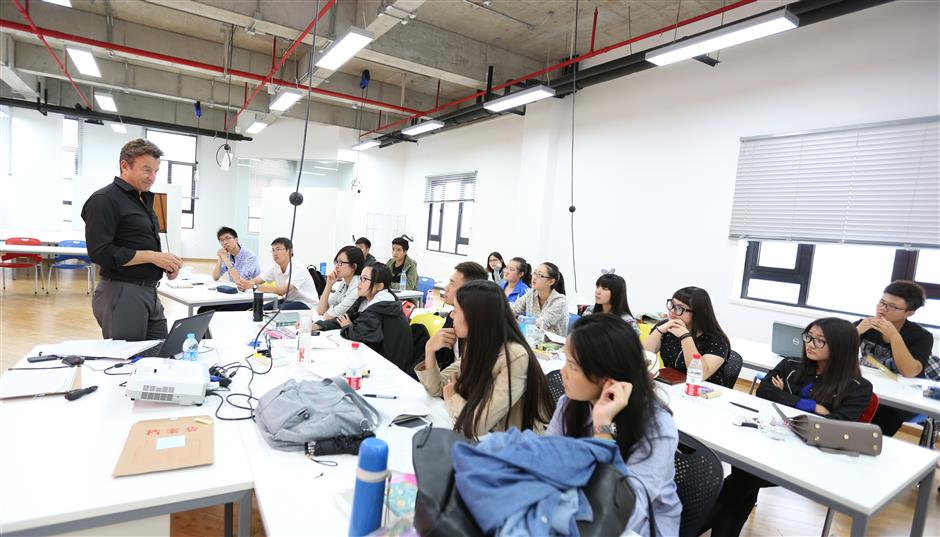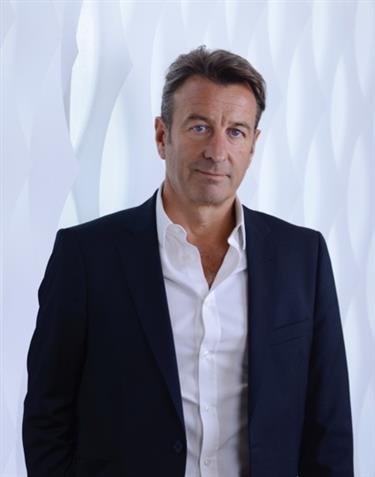

Branding Expert Puts His Stamp on Shanghai
Over the past four years, Florin Baeriswyl has traveled back and forth between Shanghai and Switzerland, spending a third of his time in town with students at Shanghai Institute of Visual Arts.
The world-renowned branding expert is the man behind the local university’s first Swiss dual education program ─ Brand Strategy and Management. The bachelor program, based on Baeriswyl’s idea, has been revised by Shanghai Institute of Visual Arts and DeTao Masters Academy to fit local students and will be completed this month after four years.
“The education is based on the Swiss dual system called ‘teaching & training,’ meaning the students also get involved in case studies and business-related assignments,” the Swiss native says. “Training my (Shanghai) students over four years, I can see them thinking long-term and more strategically.”
Baeriswyl also initiated an international speech event called “ITALK” to connect students with business leaders and branding professionals.
Previous ITALKs involved industry leaders such as Diana Chou, founder of Dragon General Aviation Group; Oliver Peters, senior technician with Bosch; and Laurent Megret, Volevatch China’s board director.
Baeriswyl, who has helped clients as diverse as Nestle, Swissair, Red Bull and Deutsche Bank, is known for integrating design with communication to ensure the brand is seen, felt and remembered by consumers.
For his master class in Shanghai, Baeriswyl combined advanced methodologies and popular industry case project with the experiences of global brands to cultivate talent in the industry to build up China’s own world-class brands.
He is also involved in the design of an official project entitled “City Branding of Shanghai.”
Although his schedule in town was packed, the energetic 58-year-old still managed to accept an exclusive interview with Shanghai Daily.
Q: Can you describe what brand strategy and management is, as many Chinese people think designing equals branding?
A: Allegorically speaking, brand strategy is about “which mountain to climb,” defining the vision and mission of a business and serving as the foundation of the brand identity.
Design encompasses the representative form performing a specific function in line with the brand.
Q: Do you think the branding of Chinese enterprises lags behind their overseas counterparts? Which Chinese brand impressed you the most and why?
A: China is catching up fast in every sector, where the understanding of branding as cultivating the culture to build up the trust for consistent growth through innovation is understood more and more.
Some brands that have impressed me include Air China, which has one of the best CSR (corporate social responsibility); DJI, a world-leading producer of drones and aerial photography systems; and Xiaomi, which is approaching one of the highest-rated IPOs (initial public offering).
Q: You majored in software engineering and later industrial design, and you also studied psychology and painting and photography, so how do all these enrich you in your career?
A: Training the left and right hemispheres of the brain was essential for my career.
Being analytical and structured as well as creative and innovative is key in branding.
Through my extensive experience in different fields of creative expression, I have been able to deepen my understanding of different perspectives and its relevance in branding.
Q: What do you think is the most challenging part of brand strategy and management?
A: The challenge is not solely on branding. It follows the patterns that we observe in nature, in life and therefore in business.
The essence is to translate complexity into something simple without losing its vital importance. This captures the significance of the idea, which makes it appealing to a largely ranged demographic and purpose.
Q: You are involved in “City Branding of Shanghai,” what is your inspiration for this project?
A: I created the overall vision for the future Shanghai city brand, consisting of the Huangpu River, which serves as the nourishing vein of Shanghai’s prosperous development.
Parallel to this, it resembles a feature of traditional Chinese painting such as the shanshui (mountain and water) landscape painting, serving as the reflection of Pudong’s skyline, with the iconic Oriental Pearl TV Tower.
Q: As a person always flying between London, Zurich, and Shanghai, how do you relax?
A: To me, it is key to live a balanced lifestyle, conscious of my fitness by doing a lot of sports and eating healthily. This is how I am able to maintain a steady level of energy, which I require in my work as well as allowing me some free time to relax and create new ideas.
Q: Rebranding is a term prevalent in Europe. Is it more difficult than branding. Why?
A: One can perceive rebranding as a disruption process, where you have to question existing business direction and framework. Therefore, this requires redefining the perception from the inside and outside of the company.
Rebranding is, for the most part, a smooth correction of the direction. Branding, on the other hand, is cultivating the roots of an entirely new business, which one could perceive as inserting seeds into the earth for a tree to grow.



